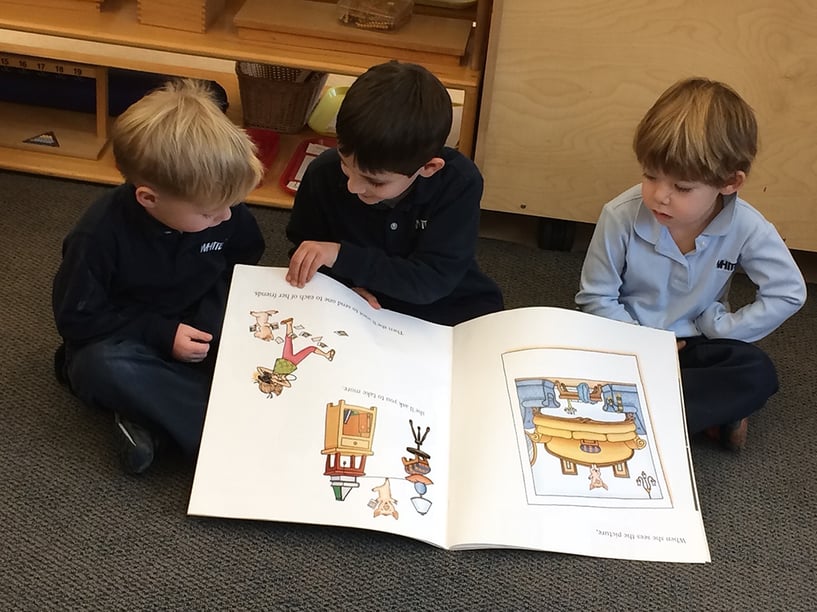As a parent and a teacher, I am continually aware of the impact I have on my own children and those I teach. When I think of the most important lessons, I tend to value the lessons of the heart the most: empathy, love, caring, and kindness.
Empathy gives us the ability to imagine how someone else is feeling; it allows us to respond to others with care and concern.
Yet there are no “lesson plans” for teaching these. We tend to think children will just "get" these lessons by "absorbing" life around them. However, I have come to think we must consciously teach our children to be empathetic and caring. Empathy gives us the ability to imagine how someone else is feeling; it allows us to respond to others with care and concern. Empathy is a skill that can be practiced, and it's one we can foster in very young children.
But how can we teach this important skill to young ones? It is intuitive, and yet takes attention and action. It starts with building relationships with the children we teach and/or parent. Through reliable and consistent interactions, we build strong, caring relationships where the child feels accepted and loved. Children first and foremost need to feel safe — both emotionally and physically. Children need to receive acceptance, validation, and empathy. Once a relationship of trust has been established, we can teach our children how to be empathetic themselves.

Children look to their teachers and parents for guidance by watching how we adults behave and how we treat one another. These examples teach our children how to behave toward others. Therefore, if we want our children to learn empathy, we need to be intentional and thoughtful in our actions and to practice acting empathetic — two truly important parenting skills.
Here are 7 guidelines that have helped me nurture empathy in young children:
1. Name and identify feelings — theirs and yours.
For example, if you are about to meet new people you might say, “Are you nervous about meeting the neighbors?” You might go on to identify how you feel nervous sometimes in new situations and share some ways in which you prepare yourself. (i.e. “It helps me to talk about what I am going to do or say before I do it.”) Naming feelings and acknowledging that you, as the adult, have similar feelings helps children feel a sense of belonging and connection. They are connecting to your feelings while identifying their own. They feel less alone, and now have a name for how they feel. This connection is the beginning of empathy.
2. After naming the feeling, it's important to help children know how to handle some feelings.
When a child is sad and hurt by the actions of a friend, they might not know how to behave, and they can easily express their feeling as anger (adults can do this too.) In our classrooms, the peace table is a place where we model conflict resolution — where we help children identify how they feel. For example, if one child tells another, “I do not like you," a conversation, prompted and supported by the teacher or adult, will often reveal an incident occurred that is the reason behind the statement. As the children talk, the teacher can model how to communicate both talking and listening.
3. When talking about feelings with children, use “I” statements.
This not only makes the communication more personal and immediate to a child, but it's the foundation of self-awareness. As an adult, we have many opportunities to model this with our children. For example, “I am feeling tired today, and I am irritable.” We can then go one step further and model owning our behavior by saying something like, “I am sorry I am irritable.”
4. Listen without judgment when the child explains how they feel.
Judging immediately discounts the feeling and breaks the trust and connection. Active listening involves the whole body, looking at the person, ceasing all other action while all of one’s attention is on the person speaking.

5. Talk about how you think someone is feeling.
“Look. Sarah is sitting by herself, I think she looks sad. Do you think we can do anything to help her?” or “Peter looks upset that you took his Lego. How would you feel if Peter took your Lego? What might make you feel better?”
6. Suggest to your child how they can be caring to another.
If another child fell and hurt themselves, you might suggest that they help that child get some ice for the injury.
7. Validate the child’s feelings and help each child acknowledge their part in any interaction.
Giving children the power to see their own behavior and how it affects others allows them the opportunity to change. Recognizing that their actions affect others empowers a child to change their own actions and to connect to others by changing their behavior. This could be an apology or a change in how two children play and interact.
As teachers and parents our greatest opportunity is to be wholly present with our children, allowing ourselves to be humble and vulnerable in their presence. It is only with such a heartfelt openness that we can reach others, making that connection with our children that fosters the fundamental and critical skill of empathy — feeling and caring for and about others.

